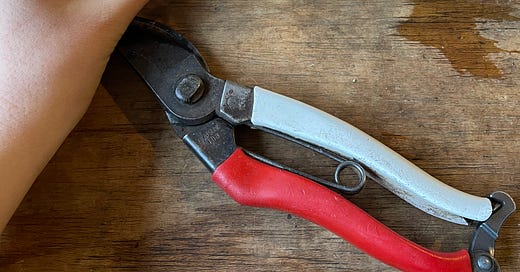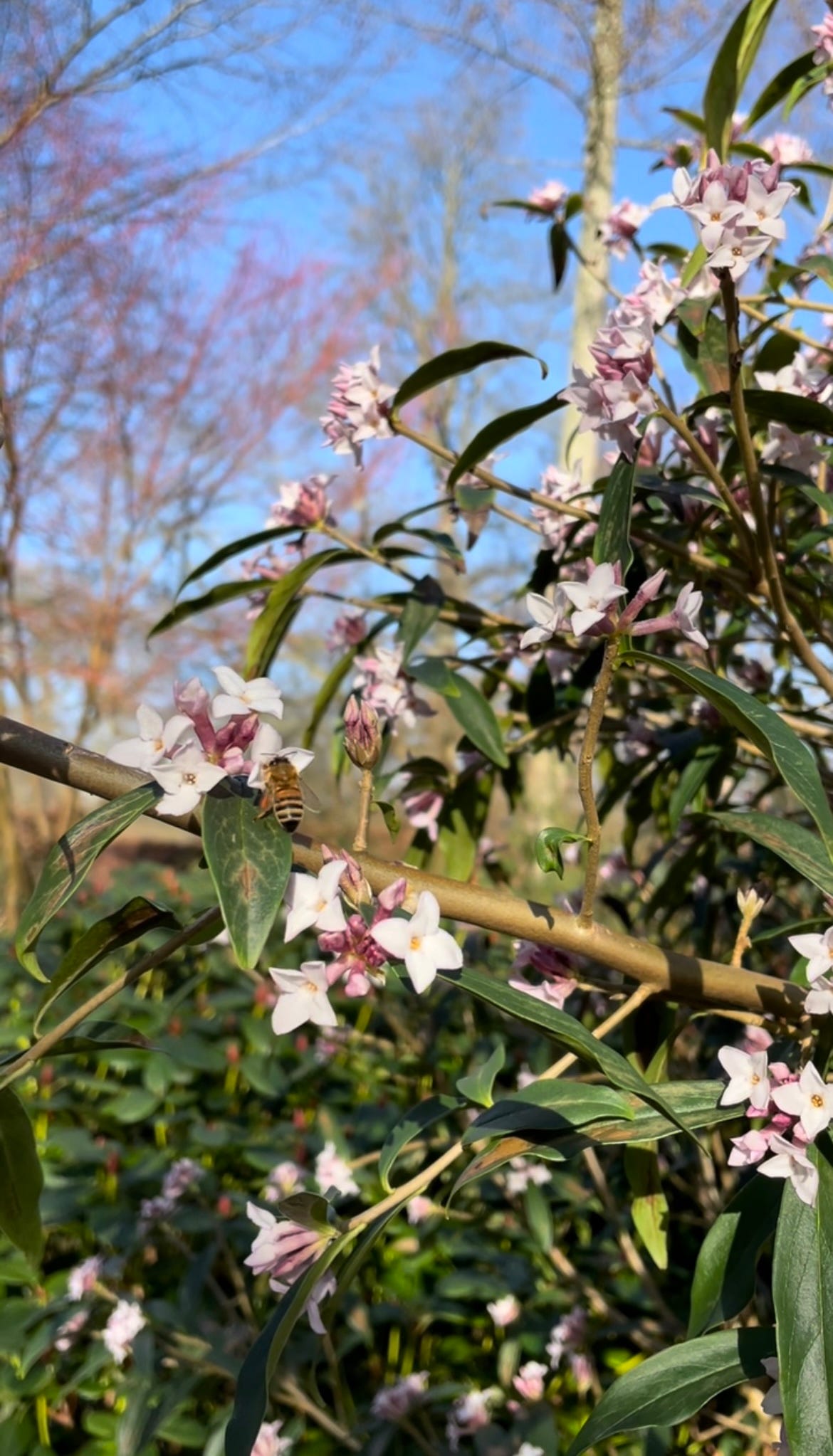My top 3 Winter Flowering Shrubs
At this time of year, it may appear to be bleak. But there is treasure to be found, if you know where to find it. I can’t urge you enough, to invest your time in planting Winter Flowering Shrubs. Mostly these are all woodland plants, so will work very well in shady areas of your gardens. They will not only be an asset to your garden, but they will make your Flower arrangements sing, at an other wise dreary and lack lustre time of year.
The most wonderful thing about these shrubs, is that you will probably smell them before you see them. They are highly fragrant with the heady scent of Spring.
1-Daphne are evergreen shrubs with deep green foliage and intensely scented clusters of pink flowers.
Plant these small, slow growing shrubs, near doorways, along paths or at the front of borders to benefit from their delicious scent. The bees go dizzy for them. At an otherwise devoid season, by growing these, you are giving the bees valuable Flowers at a problematic time of year for them.
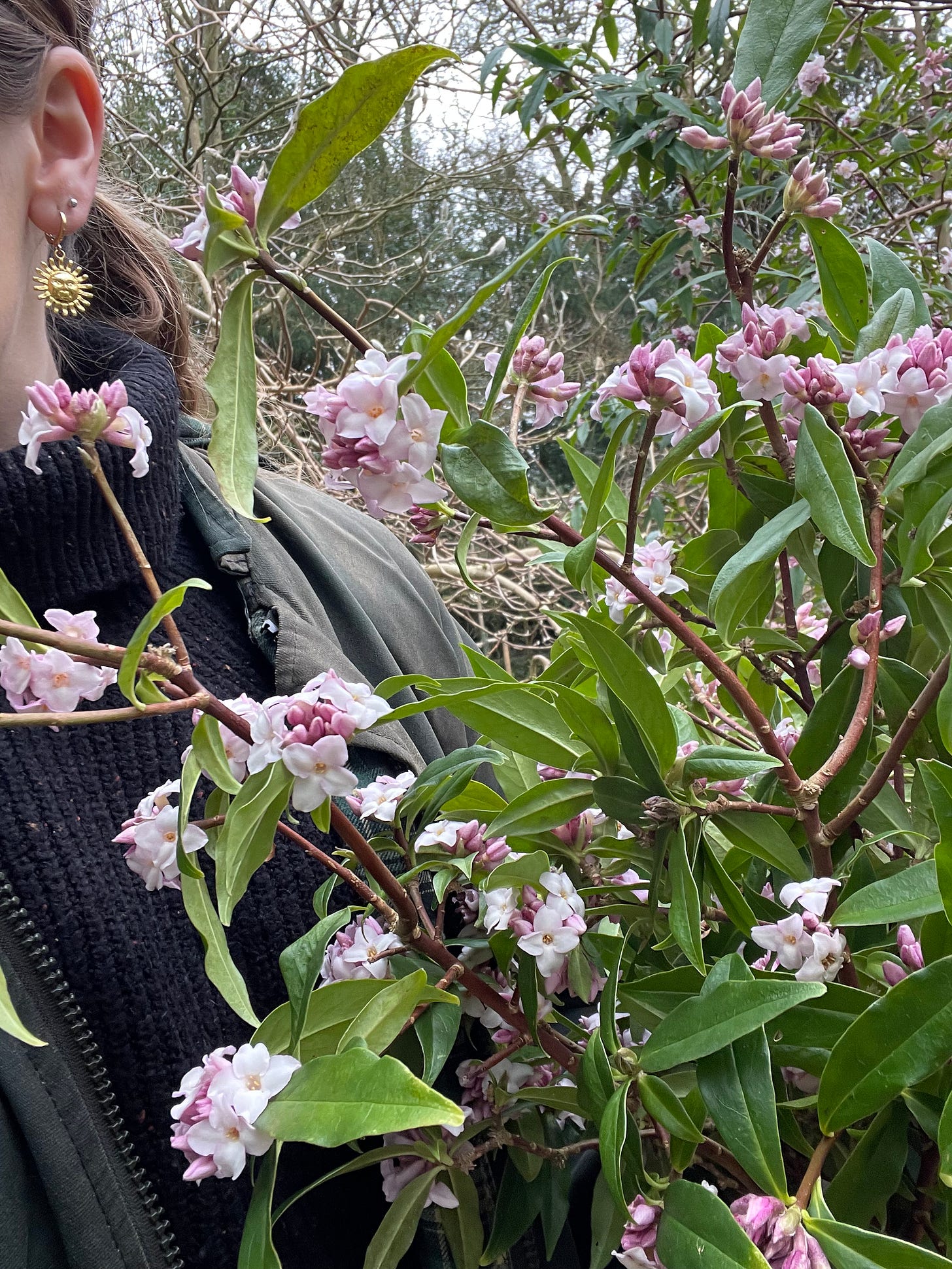
I cut them with care, as I said the Shrub is slow growing, and aslong as you cut with thought and care, you will have the most incredible scent and beautiful flowers for your home. I cut them on small, stems, and just place them into a tiny glass vessel. I place them on shelves, or on desks. Even an entrance to a room, somewhere where the scent will draw you in.
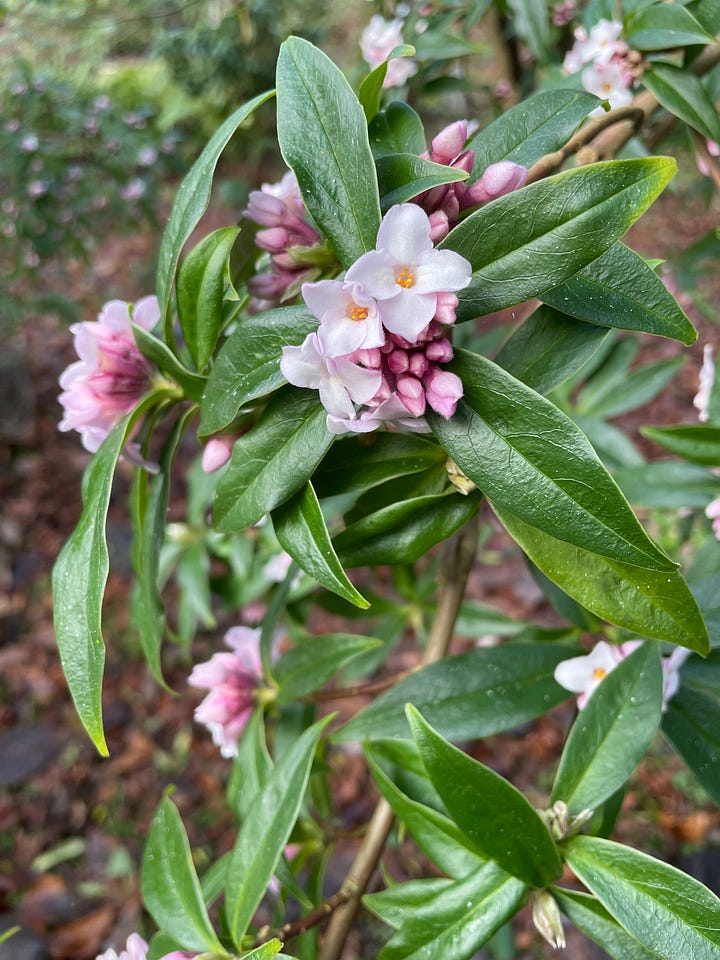
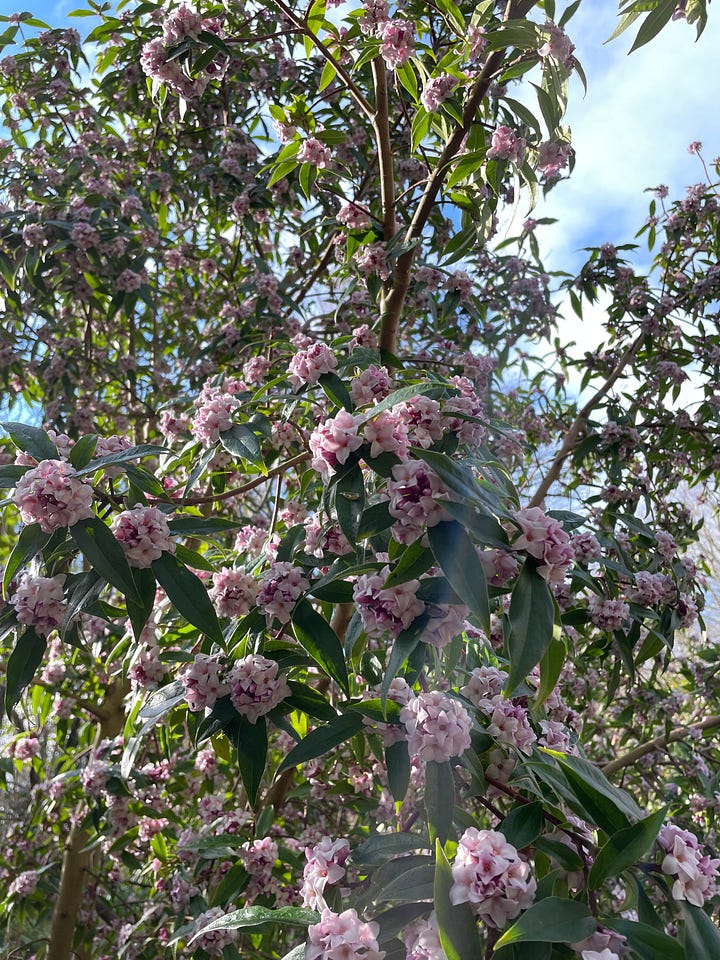
2- Next is the glorious Chimonanthus praecox. Also known as Winter Sweet.
Now unlike the Daphne, these can be planted at the back of borders, or up against a wall, as they can grow to 2.5 meters tall, and higher. I have seen them before growing like small trees in an Arboretum.

They are much twiggier and barer in appearance compared to the Daphne, with little to no leaves in Winter, as they are a deciduous shrub. This simply means that they shed their leaves annually.
But, like the Daphne, their flowers are highly scented. There is one in particular that I am thinking of, planted near to a doorway, growing up the wall of a house. At this time of year I often see people standing around it, marvelling at its scent and delicate, little, butter-yellow, bell-shaped flowers. They are quite magnificent on closer inspection. They have deep plum-coloured centres, which look like pupils to the yellow eye lashes of the outer petals.
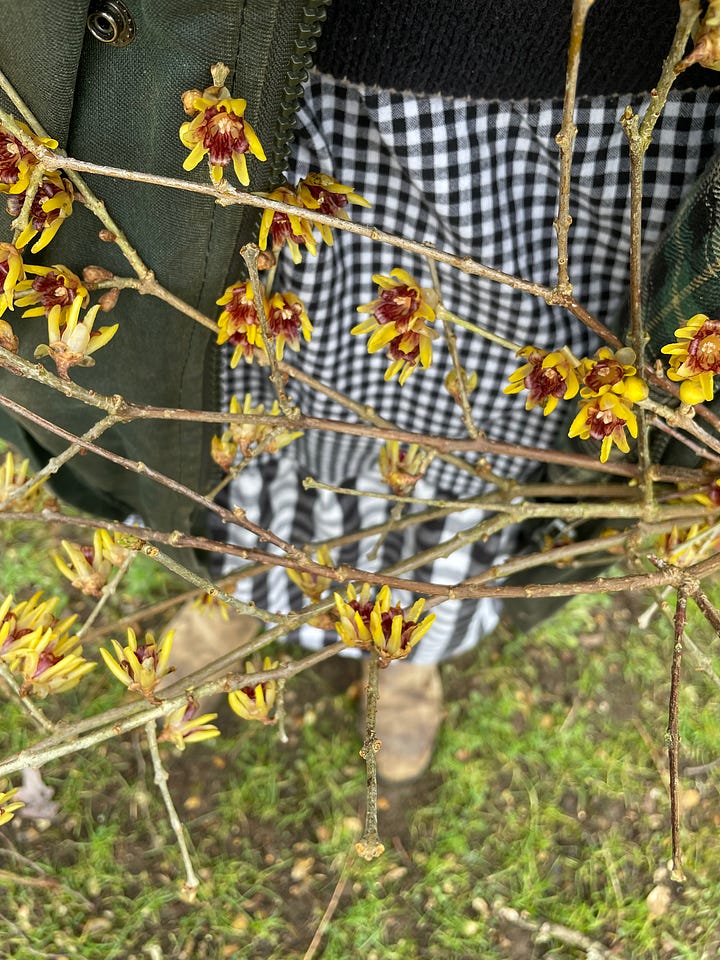
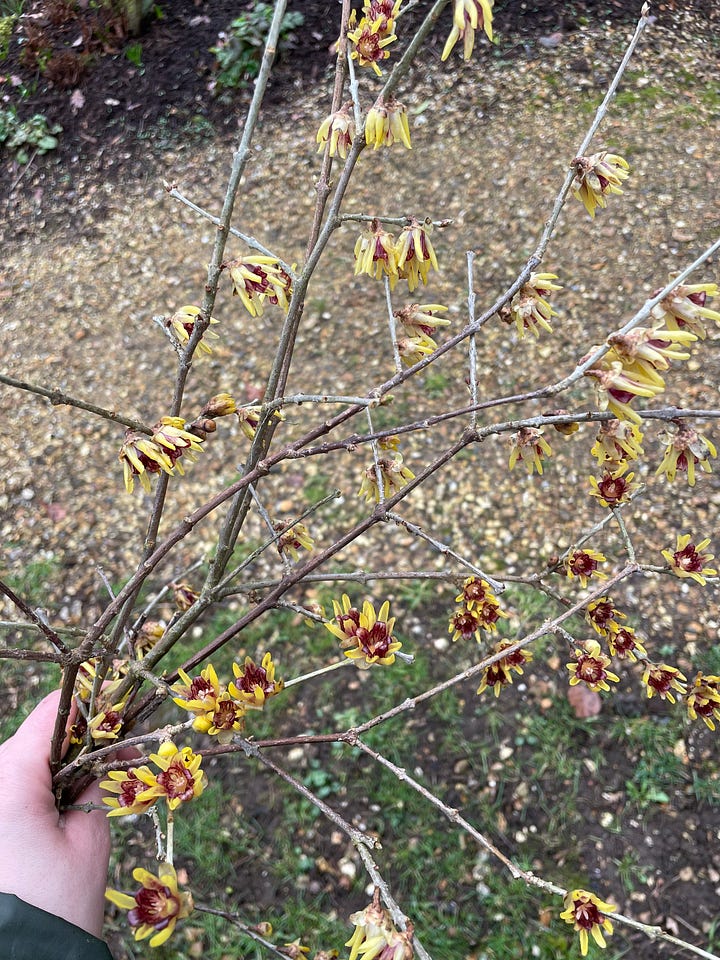
I love cutting these long, and placing on their own in a tall vase, in the centre of a table. I have also been known to cut tiny stems and arrange them delicately in a small vessel with Snowdrops for bed side or dressing tables.
Perhaps even a posy by a sink in a Bathroom.
3-Next is Hamamelis mollis, more commonly known as Witch Hazel.
These are slow growing, but grow like small trees. The one I cut from requires a ladder or at the very least long handled pruners. When cutting I do not take much, I am careful to take only a handful if I really need it. Because I feel it is so precious and very slow to regenerate.
But a Winter season cutting would not be complete without a handful of these stems every week or so. Their flowers are yellow, orange or fiery red.
Their scent is enthusiastically delicious. And their flowers look like fluttering tassels in the breeze.
If you are blessed with a larger space, please include a Witch Hazel in your garden. Their leaves are striking in Autumn, turning bright yellow to orange before shedding them for Winter. As Witch Hazel are deciduous. Meaning that when you cut them in Winter there are no leaves on the bare branches, which only means the flowers are more striking. They last weeks and weeks cut too. Which is good considering you do no not want to cut Witch Hazel liberally, but little and not often.
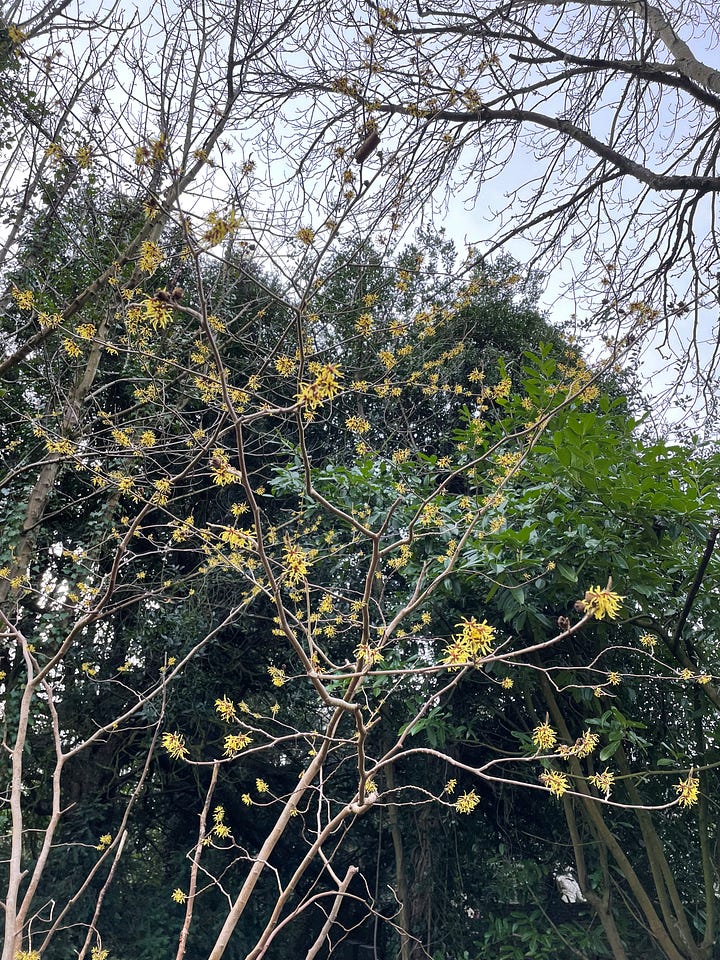
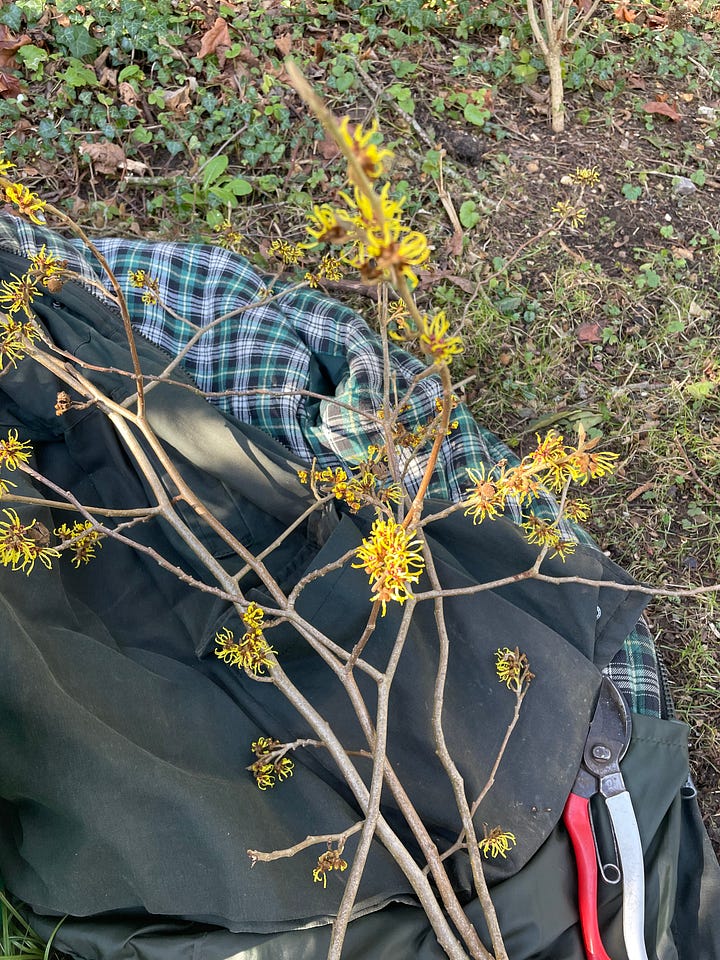
Witch hazel has been used for medicinal purposes historically, for colds, fevers, sore throats and scratched, cut skin. It’s freshly cut stems have also been known to be used for the art of Water divining.
You can underplant Witch hazel with Crocus, cyclamen or Winter Aconites, due to their deciduous nature.
Others that I have not mentioned here but are equally lovely, are Sarcococcoa, familiarly known as Winter box or Sweet box. Again these tolerate shade, are evergreen, boasting glossy deep green leaves in abundance. In Winter they have jet black berries, and the sweetest smelling, tiny tassel like white flowers, on mass, on each stem. They are not a show stopper by any stretch, but they lift the spirits. They last for a long time cut, and their scent is always enough to fill a room.
Lastly, worth a mention is Lonicera fragrantissima. Winter Flowering, Honeysuckle.
This in my opinion is an underused Winter flowering shrub.
It is one I have bookmarked to grow myself. Every year at this time, I kick myself for not planting one. Unlike other Honey suckle, this is more of a shrub, than a climber. You do not need to plant against a wall or structure.
They produce small cream, lipped, highly scented flowers, with oval light-green leaves. A posy of these would warm the heart of anyone.
If you do nothing else this February, plant one of these shrubs above. It will bring endless pleasure, year on year, come Winter. To yourself but also to the bees, and other pollinators. In fact to anyone passing by, who can enjoy their scent. A worthy investment, the highly scented, flowering gift that keeps on giving.

